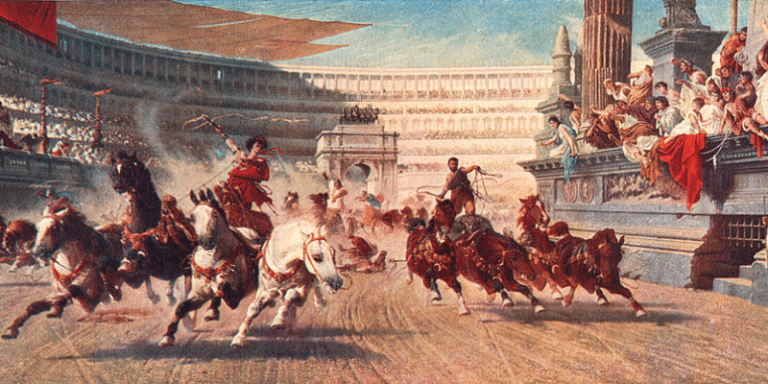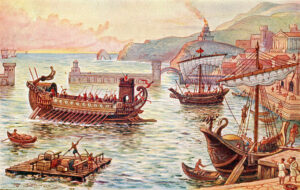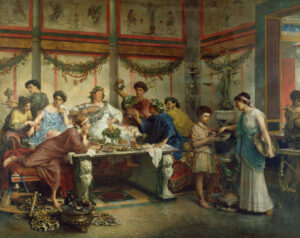The Roman Empire’s Collapse
Rome fell because the people became dependent on government handouts.
By: Caroline Adana | May 26, 2021 | 434 Words

(Photo by Ann Ronan Pictures/Print Collector/Getty Images)
As a republic, Rome was very successful. In 27 B.C., the republic became an empire ruled by emperors. The empire lasted five centuries, but it eventually went through stagnation and decline. Finally, it collapsed in A.D. 476. The modern world has much to learn from how Rome fell.
The Fall of the Republic
The Roman republic became very powerful, both on the battlefield and in economics. Thousands of slaves were captured and sent to Rome to work as cheap labor whenever it conquered new territories. The rich and powerful elites liked this because it made them wealthier. However, ordinary citizens suffered because of lack of work.

(Photo by Culture Club/Getty Images)
Conflict among the city’s elite leaders was made worse by the wealth gap because the poor and unemployed would flood their support behind any who promised them free things and money. Added to military failures and class instability, internal struggles finally led to the fall of the Roman Republic. In 27 B.C., the Senate granted power and the title emperor to Augustus.
Bread and Circuses
Under the dictatorship of the emperors, Rome experienced a period of peace and order, which was called Pax Romana, Latin for “the Roman peace.” It lasted around 200 years.

(Photo by Heritage Images/Getty Images)
But over time, the peace and wealth led to a corrupt welfare state. To appease the people, the emperors handed out free bread to the Roman citizens and built the colosseum for entertainment. It is a circular stadium, which in Latin is called a “circus.”
When people became focused on entertainment and luxury, the Roman birth rates plummeted. Rome was unable to maintain its power, and the long peace was interrupted by centuries of civil war and unrest. Rome finally collapsed in A.D. 476.
Rebirth
While most Romans had few children during this time, a tiny religious group was dedicated to family values. It was called Christianity. One hundred fifty years after the birth of Jesus Christ, there were around 40,000 Christians in the Roman Empire. By the time the Empire collapsed a few hundred years later, Christians were in the majority.
Christianity injected new energy and people into the Mediterranean civilization, but it was too late to save Rome.
However, the eastern part of the Roman Empire survived the collapse. Historians today call it the Byzantine Empire. This Christian civilization had the city of Constantinople as its capital. The Empire prospered and sustained itself for another 1,000 years until its fall in 1453 to the Ottoman Empire.
















